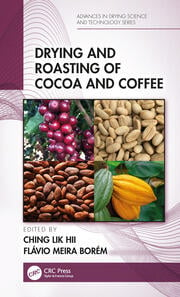ABSTRACT
Roasting is one of the most important operations in cocoa and chocolate processing, and it is important to the development of flavor that will determine the quality and improve the palatability of the finished chocolate products. Whole bean roasting is economically feasible for small- to medium-scale industry, since it requires only simple equipment and has only a few working steps which means smaller capital investment in machinery and also labor cost. The structural changes that occur during cocoa roasting were investigated by de Brito who observed that roasting generated more ruptured cells in the cocoa beans. Cocoa liquor has a larger particle surface which is desirable for off-flavor vaporization. Minimum discoloration will occur in cocoa beans with a light cotyledon color, a class of cocoa from Criollo or Trinitario varieties which is appreciated for its fine flavor. In the small-scale production of chocolate, any type of heat-induced roaster could be applied to obtain roasted cocoa beans or nibs.


